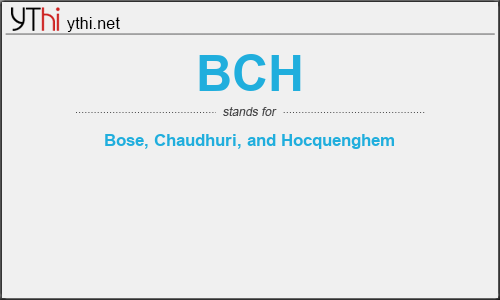What does BCH mean? What is the full form of BCH?
The Full Form of BCH is Bose, Chaudhuri, and Hocquenghem.
In coding theory, the BCH codes or Bose–Chaudhuri–Hocquenghem codes form a class of cyclic error-correcting codes that are constructed using polynomials over a finite field (also called Galois field). BCH codes were invented in 1959 by French mathematician Alexis Hocquenghem, and independently in 1960 by Raj Bose and D. K. Ray-Chaudhuri. The name Bose–Chaudhuri–Hocquenghem (and the acronym BCH) arises from the initials of the inventors’ surnames (mistakenly, in the case of Ray-Chaudhuri).
One of the key features of BCH codes is that during code design, there is a precise control over the number of symbol errors correctable by the code. In particular, it is possible to design binary BCH codes that can correct multiple bit errors. Another advantage of BCH codes is the ease with which they can be decoded, namely, via an algebraic method known as syndrome decoding. This simplifies the design of the decoder for these codes, using small low-power electronic hardware..
BCH codes form a large class of powerful random error correcting cyclic codes. These codes are used as component codes for building more powerful codes and as an error floor removal tool.
We have implemented encoders/decoders for a variety of different size and correction capacity BCH codes using different algebraic decoding options. The BCH codecs flexible design can be readily extended to support different blocksizes and correction capacities than our current configurations.
BCH
means
Bose, Chaudhuri, and Hocquenghem![]()
Translate Bose, Chaudhuri, and Hocquenghem to other language.


Leave a Reply
You must be logged in to post a comment.